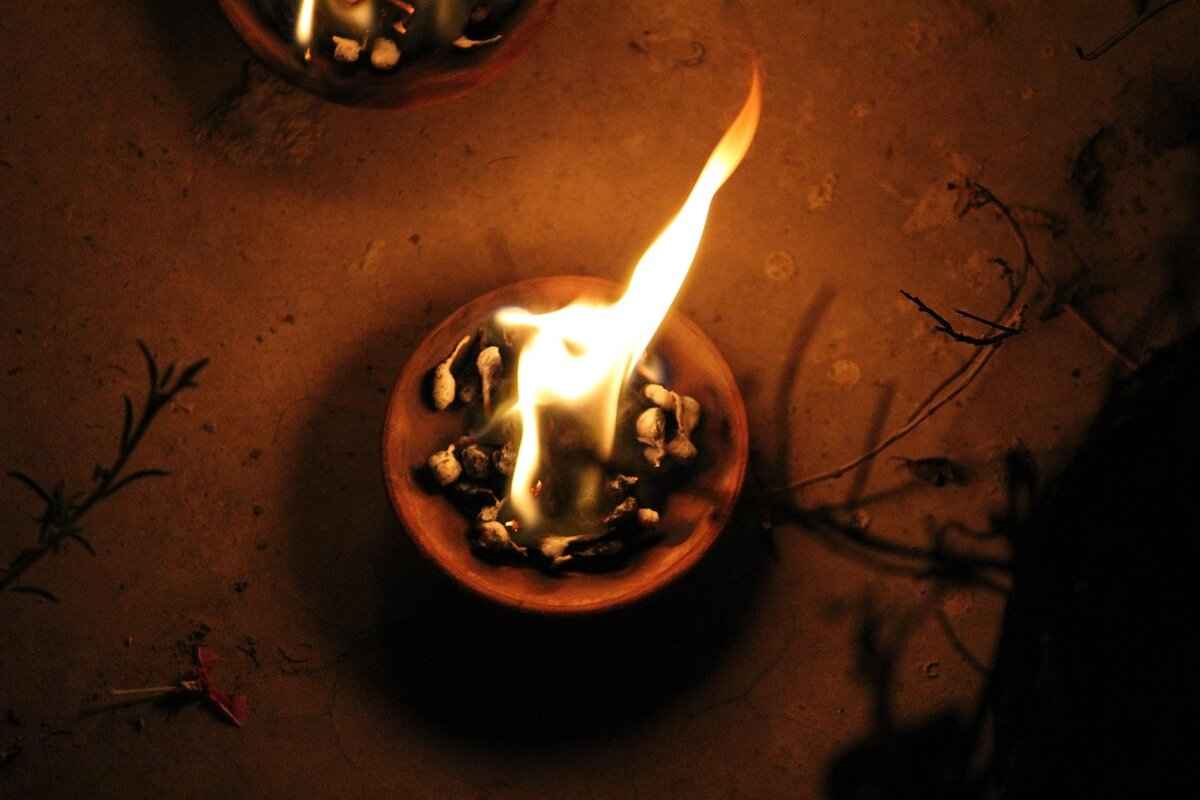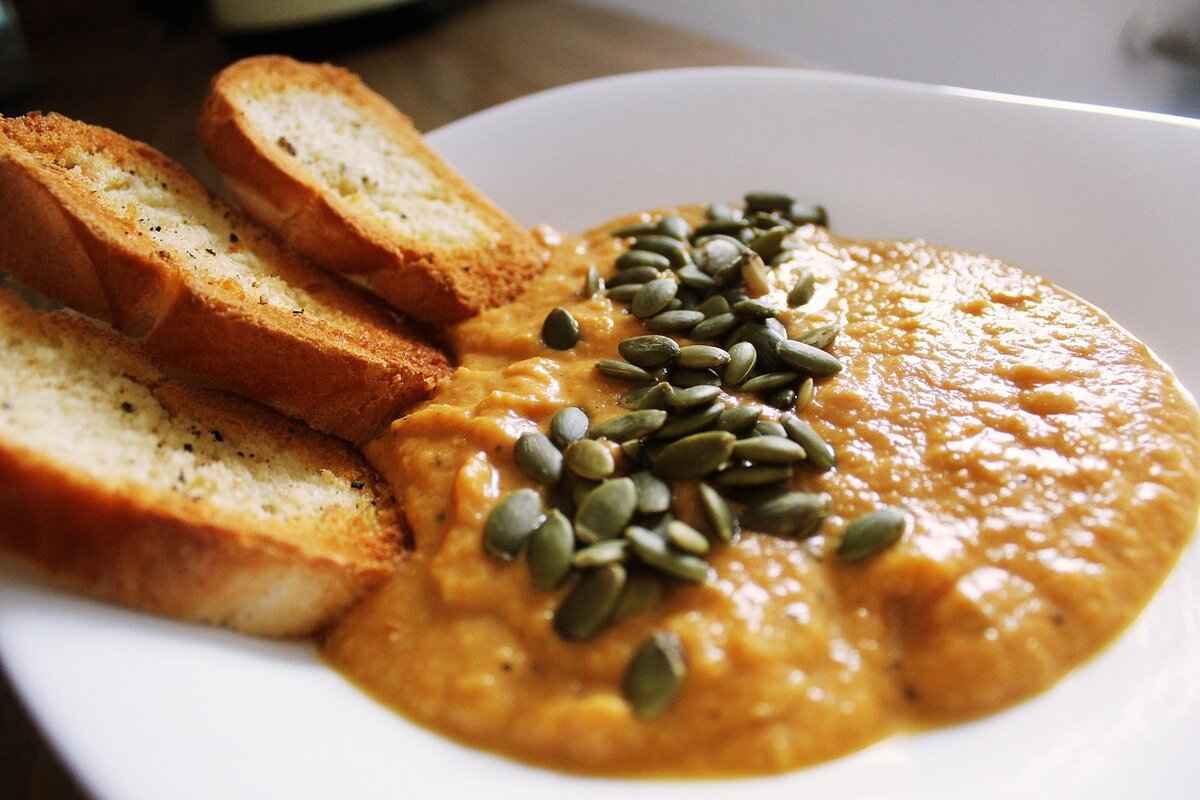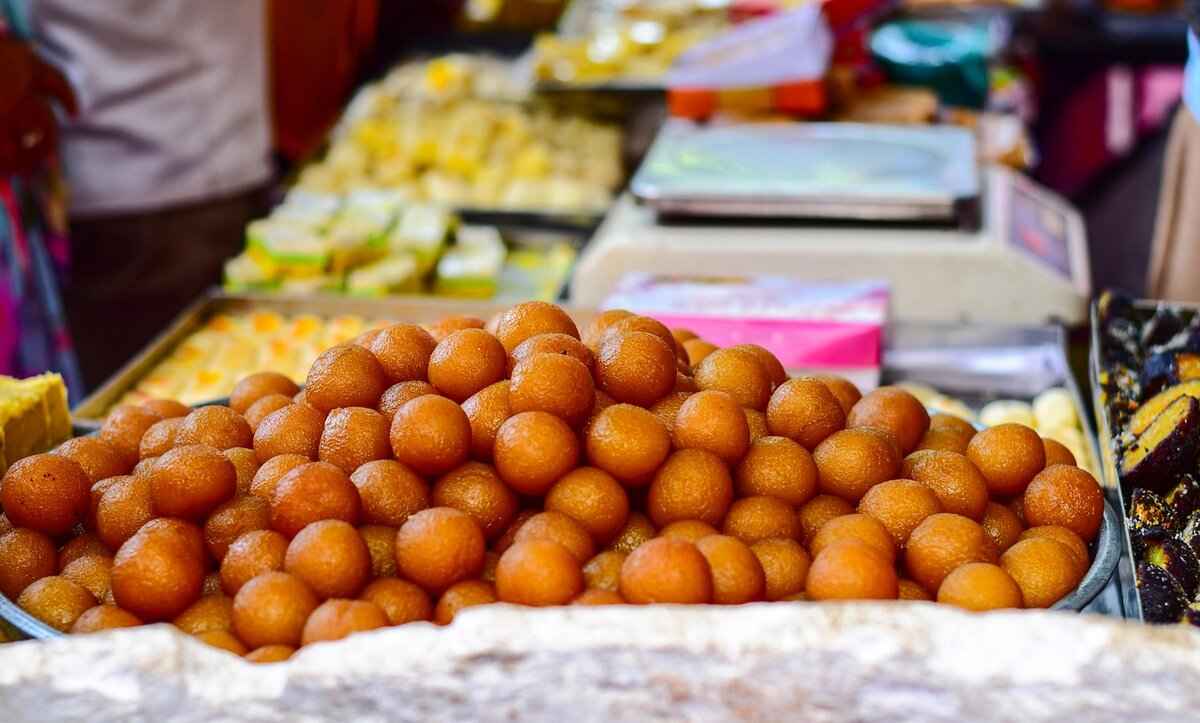Diwali, often referred to as the Festival of Lights, is a time of joy, celebration, and, most importantly, culinary delights. The festival brings together families and friends, and the food shared during this time plays a crucial role in enhancing the festive spirit. This article delves into the delicious foods enjoyed during Diwali, focusing on both traditional sweets and savory snacks that are essential to the celebrations.
Sweets are more than just treats during Diwali; they symbolize joy, prosperity, and the sharing of happiness. Exchanging sweets among friends and family fosters bonds and strengthens cultural traditions, making them an integral part of the festivities.
Diwali is synonymous with a variety of iconic sweets, each boasting unique flavors and cultural significance. Here are some must-try sweets:
- Gulab Jamun: This classic Indian sweet, made from milk solids and soaked in sugar syrup, embodies indulgence and celebration.
- Barfi: A dense milk-based confection that comes in various flavors, barfi is a versatile treat perfect for sharing.
- Ladoo: Made from flour, sugar, and ghee, ladoos are often shaped into round balls and are a popular choice during Diwali.
While sweets are the highlight, savory snacks are equally important, providing a delightful contrast to the sweetness. Here are some essential savory treats:
- Namkeen: A mix of spiced nuts and fried lentil crisps, namkeen is perfect for munching during gatherings.
- Samosas: These deep-fried pastries filled with spiced potatoes or peas are a crowd favorite that adds a delicious crunch.
- Kachori: A flaky pastry filled with spiced lentils or peas, kachoris are a savory delight that complements the sweet offerings.
Preparing Diwali foods at home enhances the festive experience, allowing families to bond over cooking and share traditional recipes passed down through generations. Here are some tips:
Understanding the key ingredients is crucial for creating authentic flavors. Common ingredients include:
- Spices: Cardamom, cumin, and turmeric are staples in many Diwali dishes.
- Sweeteners: Jaggery and sugar are essential for desserts.
- Flours: Different flours, such as chickpea and wheat flour, are used for various snacks.
Mastering specific techniques, such as frying and tempering, is crucial for achieving the perfect texture and flavor in Diwali treats. For example:
- Frying: Ensures that snacks like samosas and kachoris are crispy.
- Tempering: Enhances the flavor of savory dishes by adding spices to hot oil.
Diwali foods are distinct not only for their flavors but also for their cultural significance. They represent the rich culinary heritage of India during this auspicious festival. Different regions in India have their own unique Diwali delicacies, reflecting local ingredients and culinary traditions.
Each region has its specialties, such as:
- Peda from Maharashtra
- Chivda from Gujarat
- Sandesh from West Bengal
The visual appeal of Diwali foods enhances the overall festive experience. Vibrant colors and decorative plating make the dishes more inviting and celebratory.

Why Are Sweets Important During Diwali?
During the vibrant festival of Diwali, sweets play a pivotal role in the celebrations, embodying the essence of joy and prosperity. The tradition of exchanging sweets among friends and family not only enhances the festive spirit but also serves as a means to strengthen social bonds and cultural ties. This practice is deeply rooted in Indian tradition, where sweets symbolize good fortune and happiness.
Historically, sweets have been an integral part of Indian culture, often associated with auspicious occasions. During Diwali, they are prepared with great care and devotion, reflecting the joy of giving and sharing. The act of gifting sweets is not just about the treats themselves; it is a heartfelt gesture that conveys love and respect. Families often come together to prepare these delicacies, making the cooking process a cherished family activity.
Moreover, sweets are often offered to deities during prayers, representing gratitude and devotion. This spiritual aspect adds another layer of significance to sweets during Diwali, as they are seen as offerings that invite blessings into households. The variety of sweets available during this festive season is vast, ranging from rich, indulgent desserts to lighter, more refreshing options, catering to diverse tastes and preferences.
In addition to their cultural and spiritual importance, sweets also play a role in the culinary heritage of India. Each region boasts its own specialties, showcasing local ingredients and traditional recipes that have been passed down through generations. For instance, in North India, you might find Gulab Jamun and Barfi, while in the South, Payasam and Adhirasam take center stage. These regional variations not only enrich the festival but also highlight the diversity of Indian cuisine.
As the festival approaches, the markets overflow with colorful sweets, enticing aromas, and vibrant packaging, making it a visual feast as well. This festive presentation adds to the excitement of Diwali, as families eagerly select their favorite treats to share with loved ones. The joy of indulging in these sweets is further amplified by the atmosphere of celebration, music, and laughter that fills the air during this time.
Ultimately, sweets during Diwali are more than just delicious treats; they are a symbol of love, togetherness, and the festive spirit that unites people. The act of sharing sweets fosters connections among family and friends, creating lasting memories that are cherished for years to come. In a world that often feels divided, the simple act of exchanging sweets during Diwali serves as a reminder of the importance of community and the joy of celebration.

Popular Diwali Sweets You Must Try
During the vibrant festival of Diwali, sweets play an essential role in the celebrations, symbolizing joy, prosperity, and the spirit of togetherness. This festive season brings families and friends together, and sharing sweets is a cherished tradition that enhances the joy of the occasion. Here, we explore some of the most popular Diwali sweets you must try, each with its own unique flavor and cultural significance.
Gulab Jamun is perhaps the most iconic sweet associated with Diwali. These small, round balls made from khoya (milk solids) are deep-fried and then soaked in a fragrant sugar syrup flavored with cardamom and rose water. Their rich, syrupy texture makes them a favorite among all age groups. The preparation of Gulab Jamun is an art in itself, requiring the right balance of ingredients to achieve the perfect softness and sweetness.
Barfi is another beloved sweet that comes in various flavors, including pistachio, coconut, and chocolate. This milk-based confection is often garnished with slivers of nuts, adding both flavor and texture. Barfi is known for its dense and creamy consistency, making it a popular choice for gifting during Diwali. Its versatility allows for numerous variations, catering to different tastes and preferences.
Ladoo is a traditional sweet that signifies good fortune and prosperity. Made from various ingredients such as gram flour (besan), semolina (sooji), or coconut, these round sweets are often flavored with cardamom and nuts. The preparation of ladoos varies by region, with each family often having its own secret recipe. They are easy to make and are a must-have during Diwali celebrations.
Kaju Katli, or cashew fudge, is a premium sweet made from finely ground cashews and sugar. Its smooth texture and rich flavor make it a luxurious treat that is often reserved for special occasions. Kaju Katli is typically cut into diamond shapes and garnished with edible silver foil, adding to its festive appeal. This sweet is not only delicious but also symbolizes wealth and prosperity.
Peda is a soft, milk-based sweet that is often flavored with cardamom and garnished with nuts. Originating from the Indian state of Maharashtra, peda is a popular choice during religious ceremonies and festivals. Its creamy texture and delightful taste make it a favorite among children and adults alike. Preparing peda requires skill, as achieving the right consistency is crucial for the perfect bite.
Rasgulla is a Bengali delicacy that has gained popularity across India, especially during Diwali. These soft, spongy balls made from chhena (fresh cheese) are soaked in a light sugar syrup, creating a delightful contrast of textures. The refreshing taste of rasgulla makes it a perfect dessert after a heavy meal, and it is often enjoyed chilled, adding to its appeal during the festive season.
Diwali sweets are not just treats; they embody the essence of the festival, bringing joy and happiness to celebrations. Each sweet has its own story and significance, making them an integral part of the Diwali experience. Whether you are indulging in the rich flavors of Gulab Jamun or savoring the creamy texture of Kaju Katli, these sweets are sure to enhance the festive spirit and create lasting memories.
Gulab Jamun: The Classic Indian Sweet
Gulab Jamun is a traditional Indian dessert that has captured the hearts of many, especially during festive occasions like Diwali. This delectable sweet is made from milk solids, which are kneaded into a soft dough, rolled into small balls, and then deep-fried until golden brown. The fried balls are then soaked in a rich sugar syrup flavored with cardamom and rose water, resulting in a melt-in-your-mouth experience that is simply irresistible.
Why is Gulab Jamun So Special?
Gulab Jamun is not just a dessert; it is a symbol of celebration and togetherness. During Diwali, families and friends exchange these sweet treats as a token of love and goodwill. The act of sharing Gulab Jamun reinforces bonds and enhances the festive spirit. Its rich flavor and soft texture make it a favorite among people of all ages, ensuring that it remains a staple on every Diwali table.
Preparation Tips for Perfect Gulab Jamun
To create the perfect Gulab Jamun, attention to detail is crucial. Here are some essential tips:
- Quality of Ingredients: Use fresh milk solids, preferably khoya, for a richer taste.
- Frying Technique: Fry the balls on low heat to ensure they cook evenly without burning.
- Syrup Consistency: The sugar syrup should be of a one-string consistency for optimal absorption.
- Resting Time: Allow the fried balls to rest in the syrup for several hours, or overnight, to enhance their flavor.
Variations of Gulab Jamun
While the classic Gulab Jamun is beloved, there are many regional variations that add unique flavors and textures. Some popular adaptations include:
- Chocolate Gulab Jamun: Infused with cocoa powder, this modern twist appeals to chocolate lovers.
- Stuffed Gulab Jamun: Filled with nuts or dried fruits, these offer a delightful surprise in every bite.
- Saffron Gulab Jamun: Enhanced with saffron, this version adds an aromatic touch that elevates the traditional recipe.
Serving Suggestions
Gulab Jamun can be served warm or at room temperature, often accompanied by a scoop of vanilla ice cream or a sprinkle of chopped nuts for added texture. Its versatility allows it to be enjoyed in various settings, from family gatherings to grand celebrations.
Why You Should Make Gulab Jamun at Home
Making Gulab Jamun at home can be a rewarding experience. It allows you to customize the sweetness and flavor to your liking, ensuring that every bite is perfect. Additionally, preparing this dessert with family can strengthen bonds and create lasting memories, making it an integral part of the Diwali experience.
In conclusion, Gulab Jamun is not just a dessert; it is a celebration of culture and tradition. Its rich history and delightful taste make it a must-try during Diwali festivities. Whether you are enjoying it at home or sharing it with loved ones, Gulab Jamun continues to be a beloved sweet that brings joy to many.
Preparation Tips for Perfect Gulab Jamun
Gulab Jamun is one of the most cherished sweets in Indian cuisine, especially during festive occasions like Diwali. To create the perfect Gulab Jamun, one must focus on the texture and flavor, which are essential for an authentic experience. Here are some preparation tips that will elevate your Gulab Jamun-making skills.
- Milk Solids: The foundation of Gulab Jamun is khoya or mawa, which adds richness and creaminess.
- Flour: A small amount of all-purpose flour helps bind the dough and maintain shape.
- Frying Oil: Use a neutral oil for frying to avoid overpowering the sweet’s flavor.
- Sugar Syrup: A well-prepared sugar syrup is essential, flavored with cardamom or rose water for an aromatic touch.
When preparing the dough, it’s crucial to achieve the right consistency. The dough should be soft and pliable, but not sticky. Over-kneading can lead to tough balls, while under-kneading may cause them to break during frying. Aim for a smooth, soft texture that holds its shape when rolled into balls.
The frying technique is equally important in achieving the perfect Gulab Jamun. Here are some tips:
- Temperature: Heat the oil on low to medium flame. If the oil is too hot, the outside will cook too quickly, leaving the inside raw.
- Fry in Batches: Avoid overcrowding the pan. Frying in small batches allows for even cooking and prevents the temperature from dropping too much.
- Golden Brown Color: Fry until the balls turn a rich golden brown. This ensures they are cooked through and have a delightful texture.
The sugar syrup is what gives Gulab Jamun its signature sweetness and moisture. To achieve the right consistency:
- Consistency: The syrup should be of a one-string consistency, meaning it should be thick enough to coat the back of a spoon but not overly viscous.
- Flavoring: Infuse the syrup with cardamom pods and a few drops of rose water for a fragrant aroma that complements the dessert.
- Soaking Time: Allow the fried Gulab Jamun to soak in the syrup for at least 2-3 hours. This helps them absorb the sweetness and enhances the flavor.
While making Gulab Jamun, there are a few common pitfalls to watch out for:
- Too Much Flour: Adding excessive flour can make the Gulab Jamun dense and chewy.
- Skipping the Soaking Process: Not allowing the balls to soak in syrup can result in a dry dessert.
- Inconsistent Frying Temperature: Fluctuating oil temperatures can lead to unevenly cooked Gulab Jamun.
By following these preparation tips, you can create Gulab Jamun that is not only visually appealing but also rich in flavor and perfectly textured. This beloved sweet will surely delight your family and friends during Diwali celebrations.
Variations of Gulab Jamun
have become a delightful way to celebrate the rich diversity of Indian cuisine. While the classic version of this beloved dessert is made from khoya (milk solids) and soaked in a sweet sugar syrup, numerous regional adaptations have emerged, each offering a unique twist that tantalizes the taste buds.
One of the most popular adaptations is the Coconut Gulab Jamun. This variation incorporates desiccated coconut into the dough, giving the sweet a chewy texture and a tropical flavor. The addition of coconut not only enhances the taste but also adds a beautiful visual appeal, making it a favorite during festive occasions.
Another intriguing version is Saffron Gulab Jamun. By infusing the dough with saffron strands, this variation elevates the traditional recipe to a new level of luxury. The rich aroma and golden hue of saffron provide a sensory experience that complements the sweetness of the syrup, making it a must-try for those who appreciate gourmet flavors.
For those who prefer a nutty flavor, Pistachio Gulab Jamun is an excellent choice. This version is made by incorporating ground pistachios into the dough, which not only adds a delightful crunch but also a distinctive taste. Topped with slivers of pistachio, this variation is visually stunning and perfect for special celebrations.
In many regions, Chocolate Gulab Jamun has gained popularity, especially among younger generations. This modern twist involves adding cocoa powder to the dough, resulting in a dessert that combines the traditional essence of Gulab Jamun with the rich taste of chocolate. Served with a chocolate syrup or ganache, this version is a hit at parties and gatherings.
Cheese Gulab Jamun, made with paneer, is another innovative take that has emerged. The use of paneer gives the dessert a softer texture and a slightly tangy flavor, creating a delightful contrast with the sweetness of the syrup. This variation is particularly popular in certain parts of India, where cheese-based desserts are cherished.
Moreover, fruit-flavored Gulab Jamun has also made its mark. By incorporating pureed fruits like mango or strawberry into the dough, these versions offer a refreshing twist that is perfect for summer festivities. The fruity notes add a unique flavor profile that appeals to those looking for something different.
As you explore these variations, it’s essential to note that each region may have its own secret ingredient or technique that adds a personal touch to the traditional recipe. For instance, some families may add a hint of cardamom or rose water to their syrup, enhancing the fragrance and overall experience of the dessert.
In conclusion, the world of Gulab Jamun is vast and varied, with each adaptation offering a unique taste that reflects the rich culinary heritage of India. Whether you prefer the classic version or are intrigued by the flavored adaptations, there is a Gulab Jamun variation for everyone to enjoy during festive celebrations.
Barfi: A Festive Favorite
During the vibrant festival of Diwali, sweets play an essential role in bringing people together and celebrating joy. Among the many delightful confections, Barfi stands out as a festive favorite that embodies the spirit of the occasion. This dense, milk-based treat is not just a dessert but a symbol of love and generosity, making it a perfect choice for sharing with family and friends.
Barfi is a traditional Indian sweet made primarily from condensed milk, sugar, and various flavorings. The name “Barfi” is derived from the Persian word “barf,” meaning snow, which reflects its smooth, creamy texture. This delightful confection can be prepared in numerous flavors, including pistachio, almond, coconut, and even mango, catering to diverse palates.
Barfi’s popularity during Diwali can be attributed to its versatility and rich flavors. It is often beautifully decorated with edible silver or gold leaf, adding a touch of elegance to the festive spread. Sharing Barfi with loved ones is a way to express affection and goodwill, reinforcing social bonds during this auspicious time.
The preparation of Barfi involves a few key steps:
- Cooking the Milk: Fresh milk is boiled and reduced to a thick consistency.
- Adding Sugar: Once the milk thickens, sugar is added to sweeten the mixture.
- Flavoring: Various flavorings, such as cardamom or rose water, are incorporated for an aromatic touch.
- Setting: The mixture is poured into a greased tray and allowed to set before being cut into pieces.
Barfi is not a one-size-fits-all sweet; it comes in many delightful variations:
- Pista Barfi: Infused with pistachio nuts, this version is rich and flavorful.
- Coconut Barfi: Made with grated coconut, this variant is chewy and aromatic.
- Mango Barfi: A seasonal delight, it captures the essence of ripe mangoes.
- Chocolate Barfi: For the modern palate, chocolate-infused Barfi is a trendy twist.
Barfi can be served in various ways to enhance its appeal:
- On Festive Platters: Arrange different flavors of Barfi on a decorative platter for a colorful display.
- As Gifts: Packaged beautifully, Barfi makes an excellent gift for guests visiting during Diwali.
- With Tea: Pairing Barfi with a cup of masala chai creates a delightful culinary experience.
For those looking for healthier options, consider making Barfi with natural sweeteners like jaggery instead of refined sugar. Additionally, incorporating nuts and seeds can enhance the nutritional value while maintaining the sweet’s indulgent taste.
In conclusion, Barfi is more than just a sweet; it is a cherished part of Diwali festivities that brings people together. Its rich flavors, diverse variations, and cultural significance make it a must-try treat during this joyous season. Whether enjoyed at home or shared with loved ones, Barfi remains a beloved symbol of celebration and togetherness during Diwali.

Must-Have Savory Snacks for Diwali
During the vibrant festival of Diwali, while sweets like Gulab Jamun and Barfi take center stage, it is equally important to recognize the role of savory snacks. These delicious treats not only complement the sweetness but also provide a much-needed balance of flavors that enhance the overall festive atmosphere.
Savory snacks are essential during Diwali celebrations, offering a delightful contrast to the rich and sugary sweets. They serve as perfect accompaniments during gatherings, allowing guests to indulge in a variety of flavors and textures. Here are some must-have savory snacks that you should consider for your Diwali festivities:
- Namkeen: A medley of crunchy and spiced snacks, namkeen includes an array of options such as chivda (spiced rice flakes), sev (crispy noodle-like snacks), and bhujia (spiced gram flour snacks). These are perfect for munching on while socializing, providing a satisfying crunch that balances the sweetness of desserts.
- Samosas: These iconic pastries, filled with spiced potatoes or peas, are a crowd favorite. Their flaky exterior and savory filling make them a delightful addition to any Diwali spread. Samosas can be served with tangy tamarind chutney or spicy green chutney, enhancing their flavor even further.
- Pakoras: These deep-fried fritters, made from vegetables like onions, potatoes, or spinach, are a popular choice during Diwali. The crispy texture and spicy flavor make them an irresistible snack. Pair them with a hot cup of tea for a delightful experience.
- Kachoris: Another savory pastry, kachoris are typically filled with spiced lentils or peas. Their flaky, golden-brown crust and flavorful filling make them a delicious treat that is often enjoyed during festive occasions.
- Chakli: This spiral-shaped snack, made from rice flour and lentil flour, is seasoned with spices and deep-fried to perfection. Chakli offers a unique crunch and is often enjoyed with tea or as a standalone snack.
- Paneer Tikka: For those who prefer a vegetarian option, paneer tikka is a flavorful choice. Marinated cubes of paneer (Indian cottage cheese) are grilled to perfection, resulting in a smoky flavor that pairs well with mint chutney.
In addition to these snacks, incorporating regional specialties can add variety to your Diwali feast. For example, in Maharashtra, you might find karanji, a sweet and savory dumpling, while in Gujarat, thepla, spiced flatbreads, are popular. Each region offers unique flavors that reflect local traditions and ingredients.
The presentation of these savory snacks is also crucial during Diwali. Arrange them on decorative platters, garnished with fresh herbs or colorful chutneys to enhance their visual appeal. This not only makes the spread inviting but also adds to the festive atmosphere.
Ultimately, the inclusion of savory snacks during Diwali celebrations enriches the culinary experience. They provide a delightful contrast to the sweetness of traditional desserts and create a well-rounded feast that brings family and friends together. So, as you prepare for the festivities, don’t forget to include these essential savory treats in your Diwali menu!
Namkeen: The Crunchy Companion
Namkeen is an essential part of Indian snacking culture, especially during festive occasions like Diwali. These savory snacks offer a delightful contrast to the sweetness of traditional desserts, making them a must-have for any celebration. From spiced nuts to fried lentil crisps, namkeen provides a crunchy, flavorful experience that enhances the festive spirit.
During Diwali, a variety of namkeen is enjoyed, each with its unique taste and texture. Here are some popular types:
- Chakli: A spiral-shaped snack made from rice flour and lentils, seasoned with spices.
- Sev: Thin, crispy noodles made from gram flour, often spiced and used as a topping for various dishes.
- Mathri: A flaky, savory biscuit that is perfect for pairing with sweet chutneys.
- Bhujia: A spicy mix of gram flour and various spices, typically enjoyed as a standalone snack.
Namkeen holds a special place in Indian festivities. Its crunchy texture and spicy flavor offer a delightful contrast to the rich sweetness of traditional sweets. This balance of flavors is essential during Diwali, where guests enjoy a variety of tastes. Moreover, namkeen is often shared among friends and family, symbolizing hospitality and togetherness.
Creating namkeen at home can be a fun and rewarding experience. Here’s a simple recipe for spiced lentil crisps:
Ingredients:- 1 cup of lentil flour (besan)- 1/2 teaspoon of turmeric powder- 1 teaspoon of red chili powder- Salt to taste- Water (as needed)- Oil for fryingInstructions:1. In a bowl, mix lentil flour, turmeric, red chili powder, and salt.2. Gradually add water to form a smooth dough.3. Heat oil in a pan for frying.4. Use a piping bag or a squeeze bottle to pipe out small circles into the hot oil.5. Fry until golden brown and crispy. Drain on paper towels.6. Allow to cool before serving.
Namkeen is not just a snack; it is a reflection of regional diversity in India. Each region has its own specialties, often influenced by local ingredients and culinary traditions. For instance, the spices used in namkeen from the north may differ significantly from those in the south. This variety adds depth to the festive table and allows for a rich exploration of flavors.
Presentation is key when serving namkeen during Diwali. Consider using decorative bowls or platters to showcase these snacks. Pairing namkeen with sweet chutneys or yogurt can enhance the experience, allowing guests to enjoy a combination of flavors. Additionally, offering a mix of different namkeen varieties can cater to diverse palates, ensuring that everyone finds something they love.
In conclusion, namkeen is a vital component of the Diwali celebration, bringing people together through its delicious flavors and crunchy textures. Whether enjoyed alone or as part of a larger spread, these savory treats are sure to delight guests and enhance the festive atmosphere.
Samosas: A Crowd-Pleasing Delight
Samosas are not just a snack; they are a symbol of celebration during Diwali, embodying the essence of togetherness and festivity. These delightful pastries, typically filled with a mix of spiced potatoes or peas, offer a satisfying crunch that complements the sweetness of traditional Diwali treats. Their triangular shape and golden-brown exterior make them visually appealing, drawing everyone’s attention at any gathering.
The popularity of samosas during Diwali can be attributed to their versatility and the joy they bring to the festivities. They are often served as a starter or snack, making them a perfect addition to the array of dishes shared among family and friends. The spices used in the filling not only enhance the flavor but also evoke the rich culinary heritage of India, making every bite a delightful experience.
Preparing samosas at home can be a fun and rewarding activity. The process involves making the dough, preparing the filling, and then frying the pastries to perfection. Here’s a simple breakdown:
- Dough Preparation: Combine all-purpose flour, a pinch of salt, and oil to create a smooth dough. Allow it to rest for at least 30 minutes.
- Filling Preparation: Boil and mash potatoes, then mix with cooked peas, spices like cumin and coriander, and season with salt.
- Shaping Samosas: Roll out the dough, cut it into circles, fill with the mixture, and fold into a triangular shape.
- Frying: Deep fry in hot oil until golden brown and crispy.
While the classic potato and pea filling is a favorite, there are numerous variations of samosas that can cater to different palates:
- Paneer Samosas: Filled with spiced paneer for a creamy texture.
- Meat Samosas: Popular in some regions, these are filled with minced meat and spices.
- Vegetable Samosas: A mix of seasonal vegetables can be used for a healthier option.
Samosas are often served at gatherings, making them an ideal finger food for guests to enjoy while mingling. Their bite-sized nature means they can be easily shared, encouraging a communal atmosphere at Diwali celebrations. Pair them with mint chutney or tamaring sauce for an added flavor boost, making them even more irresistible.
Beyond their delicious taste, samosas hold cultural significance in Indian cuisine. They are often made during festivals and special occasions, symbolizing hospitality and the joy of sharing. The act of preparing samosas can also bring families together, as recipes are passed down through generations, preserving culinary traditions.
In essence, samosas are more than just a snack; they are a celebration of flavors and a cherished part of Diwali festivities. Their unique taste and cultural importance make them a crowd-pleasing delight that everyone looks forward to during the festival.

How to Prepare Diwali Foods at Home?
Preparing Diwali foods at home is not just a culinary task; it is a celebration of culture and a way to strengthen family bonds. The act of cooking together allows families to share stories and traditional recipes that have been passed down through generations. This shared experience can create lasting memories and reinforce the significance of the festival.
Cooking at home during Diwali has several advantages. Firstly, it ensures that the ingredients are fresh and of high quality, which is crucial for authentic flavors. Secondly, home-cooked meals can be customized to suit individual tastes, making the celebration even more personal. Lastly, preparing food together fosters teamwork and communication among family members, creating a sense of unity.
Before diving into the preparations, it is important to gather all the essential ingredients. Common items include:
- Flours: Such as gram flour, rice flour, and all-purpose flour.
- Spices: Including cumin, coriander, turmeric, and garam masala.
- Sweeteners: Sugar, jaggery, and honey for desserts.
- Nuts and Dried Fruits: Cashews, almonds, and raisins add texture and flavor.
To prepare Diwali foods successfully, mastering certain cooking techniques is essential. Here are some key methods:
- Frying: Many Diwali snacks, like samosas and pakoras, require deep frying. Ensure the oil is at the right temperature to achieve a crispy texture.
- Tempering: This involves heating oil with spices to release their flavors, a technique used in many savory dishes.
- Layering Flavors: Building flavors through sautéing onions, garlic, and spices before adding other ingredients enhances the depth of your dishes.
Each family often has its own traditional recipes that are cherished during Diwali. These recipes may vary by region, but they all share the common goal of celebrating the festival. Involving family members in the preparation of these dishes can lead to a fun and educational experience. You can:
- Share stories about the origins of the recipes.
- Encourage younger generations to participate in the cooking process.
- Document the recipes to preserve them for future celebrations.
As you prepare Diwali foods, it is also important to create a festive atmosphere in your kitchen. Play traditional music, decorate the cooking space with festive colors, and light diyas or candles to enhance the celebratory mood. This not only makes the cooking process enjoyable but also immerses everyone in the spirit of Diwali.
Once the cooking is complete, the joy of sharing your creations with family and friends is unparalleled. Consider organizing a small gathering where everyone can taste the dishes prepared. This not only allows you to showcase your cooking skills but also fosters a sense of community. Exchanging food with neighbors and friends is a wonderful way to spread the festive cheer.
In conclusion, preparing Diwali foods at home is an enriching experience that goes beyond just cooking. It brings families together, celebrates traditions, and creates a joyful atmosphere that is essential to the Diwali festivities. So gather your loved ones, roll up your sleeves, and start cooking!
Essential Ingredients for Diwali Cooking
When it comes to celebrating Diwali, the food plays a central role in the festivities. The essential ingredients used in Diwali cooking not only contribute to the rich flavors of the dishes but also reflect the cultural heritage of India. Understanding these ingredients can help you create authentic flavors that resonate with the spirit of this auspicious festival.
Spices are the heart and soul of Indian cuisine, and during Diwali, they take center stage. Some of the most important spices include:
- Turmeric: Known for its vibrant color and health benefits, turmeric adds warmth to many dishes.
- Cumin: This spice is often used in both whole and ground forms, providing an earthy flavor that enhances savory snacks.
- Coriander: Ground coriander adds a citrusy note, making it a staple in sweets and savory dishes alike.
- Cardamom: Often used in desserts, its sweet and aromatic flavor is essential for creating traditional sweets.
Sweeteners are vital in Diwali recipes, especially for desserts. The most common sweeteners include:
- Jaggery: A traditional unrefined sugar, jaggery imparts a rich, caramel-like flavor to sweets.
- Sugar: Granulated sugar is often used in various forms, from simple syrups to intricate dessert recipes.
- Honey: This natural sweetener is sometimes used for its unique flavor and health benefits.
Dairy products are essential in many Diwali recipes, especially sweets. Key dairy ingredients include:
- Milk: Fresh milk is the base for many traditional sweets like barfi and gulab jamun.
- Paneer: This Indian cottage cheese is used in various dishes, adding texture and flavor.
- Ghee: Clarified butter is crucial for frying and adds a rich flavor to both sweets and savory snacks.
Nuts and dried fruits not only enhance the taste but also add a nutritional boost to Diwali dishes. Commonly used varieties include:
- Almonds: Often used in sweets, they add a crunchy texture and are rich in nutrients.
- Pistachios: These nuts are frequently used for garnishing sweets, providing a pop of color and flavor.
- Raisins: Sweet and chewy, raisins are often added to both sweet and savory dishes for added sweetness.
Using fresh ingredients is key to achieving the best flavors in Diwali cooking. Fresh herbs like cilantro and mint can brighten up dishes, while fresh produce like potatoes and peas are essential for savory snacks like samosas.
In summary, the essential ingredients for Diwali cooking encompass a variety of spices, sweeteners, dairy products, nuts, and fresh produce. By understanding and utilizing these ingredients, you can create authentic and flavorful dishes that not only honor tradition but also bring joy to your celebrations. Embrace the spirit of Diwali by experimenting with these key components, and enjoy the delightful culinary journey they offer.
Cooking Techniques for Diwali Dishes
When it comes to preparing traditional Diwali dishes, mastering specific cooking techniques is essential. Techniques such as frying and tempering not only enhance the flavor but also contribute significantly to the texture of your festive treats. Understanding these methods can elevate your cooking and ensure that your Diwali sweets and snacks are nothing short of spectacular.
Frying is a fundamental cooking technique used in many Diwali recipes, especially for savory snacks like samosas and pakoras. The right frying technique ensures that these snacks achieve a crispy exterior while maintaining a soft and flavorful interior. To achieve this:
- Use the right type of oil with a high smoke point, such as vegetable or peanut oil.
- Maintain a consistent oil temperature to avoid sogginess or burning.
- Fry in small batches to ensure even cooking.
Tempering, or tadka, is another crucial technique that involves heating oil and adding spices to release their essential oils and flavors. This method is particularly important in dishes like lentil curries and vegetable preparations that accompany Diwali meals. Here’s how to perfect your tempering:
- Heat oil until it shimmers, then add whole spices like cumin seeds or mustard seeds.
- Wait for the spices to crackle and release their aroma before adding them to your dish.
- Experiment with different spices to create unique flavor profiles.
Even experienced cooks can make mistakes when frying or tempering. Here are some common pitfalls to avoid:
- Frying at too low a temperature can lead to greasy food.
- Overcrowding the frying pan can lower the oil temperature, resulting in uneven cooking.
- Not allowing spices to bloom in tempering can lead to bland dishes.
When preparing sweets like Gulab Jamun or Barfi, the texture is just as important as the flavor. Here are some tips to help you:
- For Gulab Jamun, ensure your dough is soft but not too sticky. This will help in achieving the perfect round shape.
- Fry the balls on low heat to cook them evenly and prevent burning.
- For Barfi, ensure the milk is reduced to the right consistency before setting it in a tray.
Mastering these cooking techniques is crucial not only for achieving the perfect flavor and texture but also for preserving the rich culinary heritage of Diwali. Each dish tells a story and represents the cultural significance of the festival. By honing your frying and tempering skills, you not only enhance your cooking but also pay homage to the traditions that make Diwali special.
In conclusion, investing time in learning and mastering these cooking techniques will undoubtedly lead to a more rewarding and enjoyable Diwali experience. Your family and friends will appreciate the effort, and you will create lasting memories around the festive table.

What Makes Diwali Foods Unique?
Diwali, the festival of lights, is not just a celebration of the triumph of good over evil; it is also a time when the senses are treated to a delightful array of foods. The uniqueness of Diwali foods lies not only in their rich and diverse flavors but also in their cultural significance. Each dish tells a story, reflecting the traditions and heritage of India, making it an integral part of the festivities.
During Diwali, food serves as a medium for expressing love and gratitude. Families come together to prepare and share these dishes, reinforcing bonds and cultural heritage. The act of exchanging sweets and snacks among friends and relatives symbolizes prosperity and joy, making Diwali foods essential to the overall celebration.
- Gulab Jamun: This classic Indian sweet, made from khoya (milk solids) and soaked in sugar syrup, is synonymous with indulgence during Diwali.
- Barfi: A milk-based confection available in various flavors, barfi is a versatile treat that adds sweetness to the festive atmosphere.
- Samosas: These crispy pastries, filled with spiced potatoes or peas, are a must-have savory snack that complements the sweet offerings.
One of the fascinating aspects of Diwali foods is the regional variations that exist across India. Each region boasts its own specialties, using locally sourced ingredients that reflect their unique culinary traditions. For instance:
- Peda from Maharashtra, made from condensed milk and flavored with cardamom.
- Chakli from Gujarat, a crunchy snack made from rice flour and spices.
- Rasgulla from West Bengal, soft and spongy sweets made from chhena (curdled milk).
The visual appeal of Diwali foods is equally important as their taste. Dishes are often presented in vibrant colors, adorned with decorative elements like edible silver or gold leaf. This emphasis on presentation enhances the festive experience, making meals not just a treat for the palate but also a feast for the eyes. Beautifully arranged platters and colorful sweets create an inviting atmosphere, encouraging sharing and togetherness.
Preparing Diwali foods at home can be a rewarding experience, allowing families to bond over traditional recipes passed down through generations. To create authentic flavors, it’s essential to understand the key ingredients:
- Spices: Common spices include cardamom, cumin, and turmeric, which add depth to savory dishes.
- Sugars: Jaggery and sugar are vital for sweet dishes, each imparting a unique flavor profile.
- Flours: Different flours, such as gram flour and rice flour, are used for various snacks.
Mastering cooking techniques like frying and tempering is crucial for achieving the perfect texture and flavor. For example, ensuring the oil is at the right temperature is vital for crispy snacks like samosas and chaklis.
In conclusion, Diwali foods are a beautiful blend of flavors, traditions, and cultural significance. Each dish not only tantalizes the taste buds but also reinforces the bonds of family and community, making the festival a true celebration of life.
The Role of Regional Variations
During Diwali, the festival of lights, the culinary landscape of India transforms into a vibrant tapestry of flavors and aromas. Each region contributes its own unique delicacies, showcasing local ingredients and age-old culinary traditions. This rich diversity not only enhances the festive table but also reflects the cultural heritage of the country.
The variations in Diwali foods across different regions of India play a crucial role in the celebrations. They allow families to cherish their roots while sharing their culinary heritage with others. Each dish tells a story, representing the local culture, festivals, and seasonal ingredients. This is why exploring regional delicacies is essential for a complete Diwali experience.
In North India, the festival is marked by a plethora of sweets and savory snacks. Chole Bhature, a popular dish, is often enjoyed during family gatherings. The spicy chickpeas paired with fluffy fried bread create a satisfying meal. Additionally, Rasgulla and Jalebi are must-try sweets that symbolize the sweetness of the festival. These treats are often prepared with love and shared among friends and family, enhancing the spirit of togetherness.
Moving to Western India, particularly in Gujarat and Maharashtra, the culinary offerings include Dhokla and Puran Poli. Dhokla, a steamed savory cake made from fermented rice and chickpea batter, is light and fluffy, while Puran Poli, a sweet flatbread stuffed with lentils and jaggery, adds a delightful contrast. The use of jaggery, a traditional sweetener, is prevalent in many dishes, symbolizing the harvest season.
In South India, Diwali is celebrated with a unique flair. Here, Murukku, a crunchy snack made from rice flour and lentil flour, is a favorite. It is often served alongside Payasam, a sweet rice pudding flavored with cardamom and garnished with nuts. The combination of spicy and sweet reflects the diverse palate of the region, making Diwali a feast for all senses.
East India, particularly West Bengal, is synonymous with sweets. The iconic Sandesh and Mishti Doi are traditional desserts that are a staple during Diwali. Sandesh, made from fresh paneer, is delicately flavored with cardamom and often shaped into beautiful figures. Mishti Doi, a sweetened yogurt, is another delightful treat that adds a creamy texture to the festive table.
Local ingredients significantly influence the preparation of Diwali dishes. For instance, regions that grow certain spices or fruits will incorporate them into their recipes, creating a unique flavor profile. This not only enhances the taste but also promotes the use of seasonal and fresh produce, making the dishes more wholesome and nutritious.
Culinary traditions passed down through generations play a vital role in shaping the festive menu. Families often gather to prepare these dishes, sharing stories and techniques that have been cherished over the years. This not only strengthens familial bonds but also keeps cultural practices alive, ensuring that each generation appreciates the significance of these foods.
In summary, the diverse array of Diwali delicacies across different regions of India reflects the rich culinary heritage of the country. From sweets to savory treats, each dish contributes to the festive spirit and offers a glimpse into the local culture. Embracing these regional variations not only enriches the Diwali experience but also celebrates the unity in diversity that India is known for.
Festive Presentation of Diwali Foods
The festive season of Diwali is not only a time for joy and celebration but also a feast for the senses, particularly through its visual presentation of foods. The way food is plated and presented can significantly enhance the overall festive experience, making the occasion even more memorable. The vibrant colors, intricate designs, and decorative elements used in serving Diwali dishes play a crucial role in creating an inviting atmosphere that reflects the spirit of the festival.
The visual appeal of food during Diwali is essential for several reasons. Firstly, it creates an inviting atmosphere that encourages sharing and togetherness among family and friends. When dishes are beautifully presented, they not only tantalize the taste buds but also please the eyes, making the meal more enjoyable. Moreover, the aesthetic aspect of food aligns with the cultural significance of Diwali, where light and beauty symbolize the victory of good over evil.
To achieve an impressive presentation of Diwali foods, several elements should be considered:
- Color Palette: Use a variety of vibrant colors in your dishes. Ingredients like saffron, turmeric, and beetroot can add stunning hues to sweets and savory items alike.
- Plating Techniques: Employ creative plating techniques such as stacking, layering, or using molds to give a unique shape to your dishes. A well-arranged plate can elevate the dining experience.
- Garnishing: Fresh herbs, edible flowers, and nuts can be used as garnishes to add texture and visual interest. A sprinkle of pistachios or a drizzle of honey can make a dish look more appealing.
- Serveware: Use decorative plates, bowls, and trays that complement the festive theme. Traditional Indian serveware made of brass or ceramic can enhance the overall aesthetic.
Several traditional Diwali dishes lend themselves well to artistic presentation:
- Gulab Jamun: These sweet, syrup-soaked balls can be served in a decorative bowl, garnished with slivers of almonds and a sprinkle of rose petals for an elegant touch.
- Samosas: Arrange samosas in a circular pattern on a platter, accompanied by colorful chutneys in small bowls to create a vibrant display.
- Barfi: Cut barfi into diamond shapes and arrange them on a decorative plate, topped with edible silver or gold leaf for a luxurious appearance.
In addition to food presentation, the overall ambiance of the dining area contributes significantly to the festive experience. Here are some tips:
- Lighting: Use diyas (oil lamps) and candles to create a warm, inviting glow that enhances the festive mood.
- Decorations: Adorn the dining area with colorful rangoli designs and fresh flowers to add a touch of traditional charm.
- Music: Play soft, festive music in the background to create a joyful atmosphere that complements the meal.
In conclusion, the visual appeal of Diwali foods is a vital aspect of the celebrations, enriching the experience through vibrant colors and decorative plating. By paying attention to the presentation, you can elevate the festive spirit and create lasting memories during this joyous occasion.
Frequently Asked Questions
- What are the best sweets to prepare for Diwali?
When it comes to Diwali, you can’t go wrong with classics like Gulab Jamun and Barfi. These sweets not only taste amazing but also symbolize joy and prosperity, making them perfect for the festive season!
- Can I make Diwali snacks at home?
Absolutely! Making snacks like Samosas and Namkeen at home is a fun way to bond with family. Plus, you get to enjoy fresh, homemade treats that are sure to impress your guests!
- What ingredients are essential for Diwali cooking?
Key ingredients include ghee, sugar, various spices, and gram flour. These ingredients are the backbone of many traditional Diwali recipes, giving them that authentic taste we’re all craving!
- How do regional variations affect Diwali foods?
Each region in India has its unique take on Diwali delicacies. For instance, you might find Rasgulla in Bengal or Peda in Maharashtra, showcasing local flavors and traditions that add diversity to the festive table.
- Why is presentation important for Diwali foods?
Presentation is key! Beautifully arranged foods with vibrant colors not only look appetizing but also enhance the festive spirit, making your Diwali celebrations even more special.












